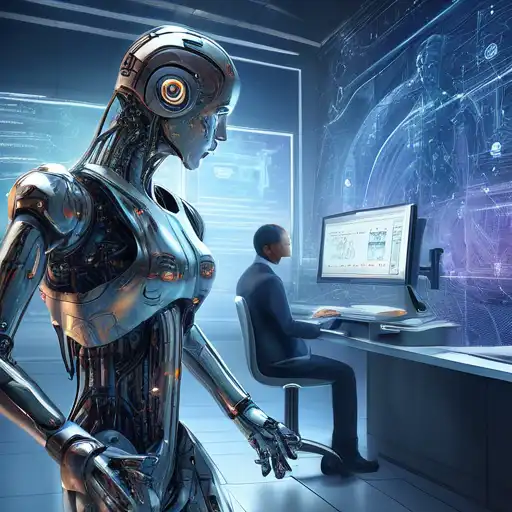Introduction to AI and Machine Learning
In the rapidly evolving world of technology, Artificial Intelligence (AI) and Machine Learning (ML) are two terms that often come up in conversations about the future of computing and automation. While they are closely related, they are not the same thing. This article aims to demystify these concepts and highlight the key differences between them.
What is Artificial Intelligence?
Artificial Intelligence is a broad field of computer science focused on creating systems capable of performing tasks that typically require human intelligence. These tasks include problem-solving, recognizing speech, learning, planning, and understanding natural language. AI can be categorized into two types: Narrow AI, which is designed to perform a narrow task (e.g., facial recognition or internet searches), and General AI, which can perform any intellectual task that a human being can.
What is Machine Learning?
Machine Learning is a subset of AI that provides systems the ability to automatically learn and improve from experience without being explicitly programmed. ML focuses on the development of computer programs that can access data and use it to learn for themselves. The process of learning begins with observations or data, such as examples, direct experience, or instruction, to look for patterns in data and make better decisions in the future based on the examples that we provide.
Key Differences Between AI and Machine Learning
- Scope: AI has a broader scope than ML. AI is about creating intelligent machines that can simulate human thinking capability and behavior, whereas ML is about machines learning from data.
- Goals: The goal of AI is to create systems that can perform complex tasks, while the goal of ML is to create systems that can learn from data to improve their performance on a specific task.
- Dependency: AI can exist without ML, but ML cannot exist without AI. ML is a pathway to achieving AI.
- Applications: AI is used in a wide range of applications, from robotics to natural language processing. ML is primarily used in applications where systems can improve with experience, such as recommendation systems and predictive modeling.
Why Understanding the Difference Matters
Understanding the difference between AI and ML is crucial for businesses and individuals looking to leverage these technologies. It helps in making informed decisions about which technology to use for specific problems. For instance, if a business wants to automate customer service, it might opt for AI solutions that can understand and respond to human language. On the other hand, if the goal is to predict customer behavior, ML models might be more appropriate.
Conclusion
While AI and ML are often used interchangeably, they represent different concepts within the field of computer science. AI is the broader concept of machines being able to carry out tasks in a way that we would consider "smart," while ML is a current application of AI based on the idea that we should be able to give machines access to data and let them learn for themselves. As these technologies continue to evolve, the distinction between them may become more nuanced, but the foundational differences will remain important for understanding their applications and potential.
For more insights into the latest tech trends, check out our articles on Data Science and Tech Trends.
